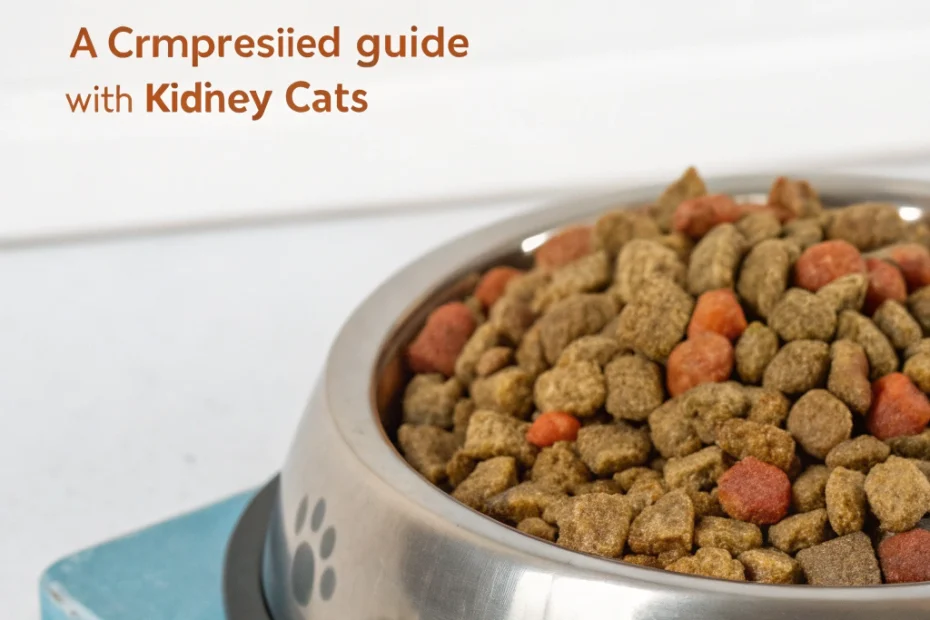At-a-Glance
Kidney food for cats is specially formulated to support feline kidney health. It is commonly used for cats with kidney concerns, providing a diet that may help manage their condition. This type of food often contains lower levels of protein, phosphorus, and sodium, which can be beneficial for cats with kidney issues. Understanding how to choose the right kidney food and how it fits into your cat’s overall care plan is crucial for their well-being.
How to Choose
When selecting kidney food for your cat, consider several factors that can influence your decision. First, consult with your veterinarian to understand your cat’s specific dietary needs. They can provide guidance on the nutritional requirements that may support your cat’s kidney health.
Ingredients to Look For
Look for kidney foods that contain high-quality proteins, as these are easier for your cat to digest and metabolize. Additionally, foods with reduced phosphorus and sodium levels are often recommended for kidney health. Omega-3 fatty acids and antioxidants may also be beneficial, as they can support overall health and reduce inflammation.
Types of Kidney Food
Kidney food for cats comes in various forms, including dry kibble, wet canned food, and even homemade options. Each type has its own benefits and considerations. Wet food can be advantageous for increasing your cat’s water intake, which is important for kidney health. Dry food, on the other hand, is convenient and has a longer shelf life.
Safety & Setup
Ensuring the safety of your cat’s diet is paramount. Always introduce new foods gradually to avoid digestive upset. Start by mixing a small amount of the new kidney food with your cat’s current diet, gradually increasing the proportion over a week or two.
Monitoring Your Cat’s Response
Keep an eye on your cat’s reaction to the new food. Look for any signs of discomfort, such as vomiting, diarrhea, or changes in appetite. If you notice any adverse reactions, consult your veterinarian immediately.
Storage and Handling
Proper storage of kidney food is essential to maintain its nutritional value. Store dry food in a cool, dry place, and keep it sealed to prevent contamination. Wet food should be refrigerated after opening and used within a few days to ensure freshness.
Core Pillars
The core pillars of a kidney-friendly diet include balanced nutrition, hydration, and regular veterinary check-ups. A balanced diet tailored to your cat’s specific needs can help manage kidney health effectively.
Hydration
Hydration is crucial for cats with kidney issues. Ensure your cat has access to fresh water at all times. Wet food can also contribute to their daily water intake, which is beneficial for kidney function.
Regular Veterinary Visits
Regular check-ups with your veterinarian are essential to monitor your cat’s kidney health. They can perform tests to assess kidney function and adjust dietary recommendations as needed.
Placement & Environment Tips
Where you place your cat’s food and water can impact their willingness to eat and drink. Choose a quiet, comfortable area where your cat feels safe and relaxed.
Feeding Stations
Consider setting up multiple feeding stations if you have more than one cat. This can reduce competition and stress, encouraging your cat to eat more comfortably.
Encouraging Hydration
Place water bowls in various locations around your home to encourage your cat to drink more. Some cats prefer running water, so a cat water fountain might be a good investment.
Comparison with Alternatives
Kidney food for cats is specifically designed to address the needs of cats with kidney issues, but there are alternative diets that some pet owners consider.
Prescription Diets
Prescription diets are formulated to meet the specific needs of cats with kidney problems and are often recommended by veterinarians. These diets are typically more tailored than over-the-counter options.
Homemade Diets
Some cat owners opt for homemade diets, believing they can better control the ingredients and quality. However, creating a balanced homemade diet can be challenging and should only be done under veterinary guidance.
FAQs
What are the signs of kidney issues in cats?
Common signs include increased thirst and urination, weight loss, decreased appetite, and lethargy. If you notice these symptoms, consult your veterinarian.
Can all cats eat kidney food?
Kidney food is formulated for cats with specific health needs. It’s best to consult your veterinarian before feeding it to a healthy cat.
How long does it take to see improvements?
Improvements can vary depending on the cat and the severity of their condition. Regular veterinary check-ups will help monitor progress.
What to Do Next
After understanding the basics of kidney food for cats, the next step is to consult your veterinarian. They can provide personalized advice and help you choose the best diet for your cat’s needs. Remember, maintaining a balanced diet and regular veterinary care are key components of managing your cat’s kidney health.
Disclaimer: Always consult your veterinarian for personalized advice regarding your cat’s health.
